Occupational Safety Training in Book Manufacturing Factory
99,000 ₫
Note: The above price is calculated for one person, the price may fluctuate depending on the number of trainees participating in the course and the movement of the market. For more accurate pricing support, please refer to the quotation table or contact our consulting staff directly.
Occupational safety is an important issue in book manufacturing factories and needs to be addressed promptly to ensure the health and safety of workers and enhance the reputation of enterprises. The Occupational Safety Training course is one of the effective solutions to raise awareness about preventing occupational accidents for workers when participating in book manufacturing.
Table of Contents
Toggle1. Overview of book products
a. What are book products?
- A book is a printed and distributed literary document for reading. Books can include many different genres such as novels, short stories, poetry, essays, historical documents, science, textbooks, or reference books. Books are often written by one or more authors and are published for the purpose of educating, entertaining, or providing information to readers. Books can be published in many different forms, including printed books, e-books, and audiobooks. Books have contributed greatly to the development of the culture and traditions of countries around the world.
- The book manufacturing industry in Viet Nam has been developing quite positively in recent years. According to a report by the Viet Nam Publishers Association, the number of book titles produced and published in Viet Nam has grown impressively from 2016 to the present. In 2020, Viet Nam published more than 39,000 book titles with a total output of nearly 500 million copies.
- However, along with the development of technology and the digital revolution, today’s readers are increasingly tending to turn to e-book formats, online magazines, and online reading platforms, which is a challenge for publishers and the traditional book manufacturing industry in Viet Nam.

b. Types of book manufacturing machinery
The types of machinery and equipment for book manufacturing include:
- Printing machine: A printing machine is the main tool for printing book pages on paper. There are many different types of printing machines, from inkjet printers to laser printers.
- Plate making machine: A plate making machine is used to print book pages onto plates, thereby creating official prints.
- Book cutting machine: A book cutting machine is used to cut book pages to precise sizes and shapes.
- Book binding machine: A book binding machine is used to staple, glue, or screw book pages together into a complete book.
- Book covering machine: A book covering machine is used to wrap the cover and lining into the book.
- Book pressing machine: A book pressing machine is used to press the books together to make them flatter and neater.
- Special processing equipment: In addition to the main machinery, there is also a lot of other special processing equipment used to produce special types of books such as hardcovers, softcovers, picture books, textbooks, and art books.
All the above machinery and equipment are used to produce quality books and meet modern book manufacturing standards.

c. Typical book manufacturing businesses in Viet Nam
There are many typical book manufacturing businesses in Viet Nam, some of which are notable as follows:
- Nha Xuat Ban Kim Dong: is the leading book production and distribution unit for children in Viet Nam, established in 1957. Kim Dong books are always highly rated for quality, safety, and educational value.
- Nha Xuat Ban Giao Duc: is the leading production and distribution unit of textbooks, teaching materials, and learning materials in Viet Nam. Nha Xuat Ban Giao Duc always innovates and updates book content to suit new educational programs.
- Nha Xuat Ban The Gioi: is the leading production and distribution unit of specialized books, scientific books, economics, literature, art, and religion in Viet Nam. Books from Nha Xuat Ban The Gioi are often of high quality and are considered to provide accurate and reliable information.
- Nha Xuat Ban Hoi Nha Van: is the production and distribution unit of literary, artistic, and humanistic works. Books from Nha Xuat Ban Hoi Nha Van often have artistic value and are highly rated for the quality of their content.
- Cong ty co phan Van hoa Phuong Nam: is the production and distribution unit of books on culture, history, literature, art, and tourism. Cong ty co phan Van hoa Phuong Nam always innovates and updates book content to meet the needs of readers.
These are just a few typical examples, the book manufacturing market in Viet Nam has many different units and is growing.
d. Specific jobs in a book manufacturing factory
Group 1
- Executive director, deputy executive director, department head in a book manufacturing factory.
Group 2
- Safety officer: manages safety in the factory, designs safety procedures, monitors and urges employees to comply with safe work procedures.
Group 3
- Printing: this is the process of directly printing book pages on paper, using different types of printing machines to create printed book pages.
- Cutting and collating books: this is the job of cutting printed paper into single book pages, then collating the pages together to form books.
- Binding: after the book pages are collated, the next job is binding, which includes processes such as cutting, binding the spine, gluing the cover, printing the book title and author on the cover.
- Quality control: the quality control job is important to ensure that the produced books meet quality standards. This process includes checking book pages, book covers, and other details to ensure that the books are free of technical errors and the printing quality is good.
- Packaging and transportation: finally, the book will be packaged and transported to dealers, bookstores, or final customers. This process includes packaging books into boxes, printing labels, and packing orders for shipping.
Group 4
- Jobs in the office, service, sales, marketing.
- Production management, quality management, human resource management, material management, financial accounting management.
- Design and layout: this is the job of creating the design for the book, including determining the pages that are suitable for the content, font format, book size, layout, images, etc.

2. Overview of safety training course for book manufacturing
Within the scope of this article, we focus on issues related to Group 3, because Group 3 is the group that directly participates in the manufacturing process, bearing the highest risk of labor safety. Refer to other groups here
a. What is Group 3 labor safety training?
- Labor safety training for Group 3 is a series of lessons that equip employees with awareness of how to prevent labor accidents.
- The labor safety training course will help employees recognize and prevent dangers, and limit the risks of labor accidents during work.
REGISTER FOR LABOR SAFETY TRAINING SERVICE
b. Training duration
Initial safety training duration
- The total training duration is at least 24 hours, including the examination time.
- 8 hours of theoretical study on the system of policies and laws on labor safety and hygiene
- 8 hours of theoretical study on basic knowledge of labor safety and hygiene
- 4 hours of theoretical study on specialized training content
- 2 hours of practical training on specialized training content
- 2 hours of theoretical examination at the end of the training course
The safety training center will allocate the time into many training sessions depending on the arrangement of study time for employees. But usually, there will be 6 training sessions, the course will take place in 3 days, on the condition that the manufacturing business can arrange continuous study time.
Periodic safety training duration
- Before the labor safety card expires, if employees want to be re-issued, they must go through a periodic labor safety training course, with the periodic safety training duration being at least 50% of the initial safety training duration.
Explanation: the total periodic labor safety training duration is at least 12 hours, including the examination time. After completing the periodic training course and passing the required exam, employees will be re-issued or have their labor safety card extended.
c. Content of the training course
| STT | TRAINING CONTENT | TRAINING DURATION (HOURS) | |||
| Total | Of which | ||||
| Theory | Practice | Examination | |||
| I | System of policies and laws on labor safety and hygiene | 8 | 8 | 0 | 0 |
| 1 | Overview of the system of legal normative documents on labor safety and hygiene. | 6 | 6 | ||
| 2 | System of technical standards and regulations on labor safety and hygiene. | 1 | 1 | ||
| 3 | Specific regulations of state management agencies on labor safety and hygiene when newly building, expanding, or renovating works, facilities for manufacturing, using, preserving, storing, and inspecting machinery, equipment, materials, and substances with strict requirements on labor safety and hygiene. | 1 | 1 | ||
| II | Basic knowledge of labor safety and hygiene | 8 | 8 | 0 | 0 |
| 1 | Basic knowledge of dangerous and harmful factors at the workplace. | 4 | 4 | ||
| 2 | Methods to improve working conditions. | 1 | 1 | ||
| 3 | Safety culture in manufacturing and business. | 1 | 1 | ||
| 4 | Rights and obligations of employers, employees; policies and regimes on labor safety and hygiene for employees; functions and duties of the labor safety and hygiene network. | 1 | 1 | ||
| 5 | Labor safety and hygiene regulations, safety and hygiene signs, and the use of safety equipment, personal protective equipment; professional skills, first aid for labor accidents, and prevention of occupational diseases. | 1 | 1 | ||
| III | Specialized training content | 6 | 4 | 2 | 0 |
| General knowledge about machinery, equipment, and substances that generate dangerous and harmful factors; analyzing, evaluating, and managing risks related to labor safety and hygiene, safe working procedures with machinery, equipment, and substances that have strict requirements on labor safety and hygiene. | 6 | 4 | 2 | ||
| IV | Safety training examination at the end of the training course | 2 | 2 | 0 | 0 |
| Total | 24 | 22 | 2 | ||
See more training content for 6 groups
d. Labor safety card
After completing the labor safety training course and passing the exam, the employee will be issued a labor safety card (in practice often called a Group 3 labor safety certificate ).
In which, the Group 3 safety card will clearly show information such as: full name, date of birth, specific job and working environment. At the same time, it also has the training duration, a red seal, and a signature confirming the completion of the training course.
According to the regulations on issuing safety cards specified in Clause 2 of Article 24 of Decree 44/2016/ND-CP, it is divided into 2 cases:
- In the case where the employer and the employee have a labor contract with each other, the employer must sign, stamp, and seal the safety card for the trained person in Group 3 after completing the training course from a labor safety training unit, and at the same time passing the exam.
- In the case of a freelance or seasonal worker who does not have a labor contract, the training unit must sign, stamp, and seal the safety card for the employee after completing the training course from a labor safety training unit, and at the same time passing the exam.

3. Identifying hazards affecting employees in book manufacturing
Some potential hazards in the book manufacturing process that can affect the health of employees are as follows:
- Some chemicals used in the book manufacturing process such as printing ink, solvents, and detergents can be harmful to employees’ health if they are exposed to them too much or improperly.
- The book manufacturing process can also generate dust and fumes, especially during printing. Exposure to dust and fumes can cause respiratory problems, such as bronchitis and asthma.
- The machinery used in book manufacturing can cause poisoning if not properly maintained and cleaned.
- Jobs in book manufacturing such as layout, paper cutting, book collating, and binding require employees to work at a fast pace and produce many products in a short time. This can cause work pressure and fatigue, which is harmful to the health of employees.
4. Common types of labor accidents for employees in book manufacturing
Common types of labor accidents for employees in book manufacturing include:
- Chemical accidents: When working with chemicals in the book manufacturing process, employees can be infected or exposed to harmful chemicals such as printing ink, solvents, detergents, and additives.
- Fire and explosion accidents: Due to the use of electrical equipment and chemical substances, books is a field with a high risk of fire and explosion.
- Burn accidents: In the book manufacturing process, employees can be burned by contact with hot production equipment or hot molten chemicals.
- Hand cutting accidents: The use of paper cutting equipment, printing machines, pressing machines… can cause hand cutting accidents for employees.
- Fall accidents: Jobs such as stacking, moving materials, binding, and paper cutting can lead to fall accidents.

5. Safety measures when participating in book manufacturing
To ensure safety in the book manufacturing process, safety measures need to be implemented as follows:
- Use protective equipment: Employees need to use personal protective equipment such as masks, gloves, hard hats, safety glasses, and jackets to protect their health during work.
- Ensure personal hygiene: Employees need to comply with personal hygiene regulations, ensuring their health and avoiding illness during work.
- Pollution control: Book manufacturing factories need to use pollution control equipment such as fan systems, air filters, and waste treatment systems to minimize pollution during the manufacturing process.
- Use safe equipment and machinery: Equipment and machinery need to be checked and maintained regularly to ensure user safety.
- Minimize chemical use: Chemical use needs to be minimized to reduce the risk of pollution and harm to the health of employees.
- Train employees on labor safety: Employees need to be trained on labor safety and manufacturing processes to ensure they understand and comply with labor safety regulations.
- Adjust the working environment: The working environment needs to be adjusted appropriately to create the best working conditions for employees.
- Periodically organize labor environment monitoring in factories and enterprises, collect and analyze harmful factors to employees, thereby adjusting to reduce the level of harm to prevent occupational diseases for them.
6. Benefits of labor safety training for book manufacturing
An Toan Nam Viet provides businesses with great benefits after completing labor safety training courses as regulated in Decree 44/2016/ND – CP on labor safety and hygiene work for companies, enterprises, and businesses.
- Employees can identify potential risks of labor accidents and thereby have preventive measures to avoid labor accidents.
- Your business can establish risk prevention measures in the manufacturing, operation, and maintenance process.
- Minimize costs when there is a risk of labor unsafety.
- Uninterrupted manufacturing will help increase labor productivity and product quality.
- Comply with labor safety law regulations, avoiding legal risks.
- Create prestige and professionalism in all aspects, thereby elevating the brand for your business.
Nam Viet’s training courses are a solution to prevent and combat external factors that affect each individual so that they can avoid dangers that can lead to injury or, more seriously, death.
REGISTER FOR LABOR SAFETY TRAINING SERVICE
7. Customer feedback after completing the labor safety training course for book manufacturing
An Toan Nam Viet has many years of experience in the mission of accompanying many businesses in Viet Nam in general and in the southern provinces in particular. And that responsibility to Nam Viet is something extremely valuable, which is why Nam Viet’s Labor Safety Training work is always focused on becoming more and more professional. And the motivation for An Toan Nam Viet to grow strongly to this day comes from the positive feedback and suggestions from businesses. Below are the feedbacks from our partners that we have served.
Cong Ty Co Phan Dau Tu Xay Dung Bac Nam E&C
“The first time I used the service at An Toan Nam Viet, I was very surprised by the enthusiastic 24/7 support of the team of consultants. The class organization was very fast and convenient for our company, thank you very much for Nam Viet’s service!”
Cong Ty Co Phan Xay Dung va Thuong Mai Hoa Dat
“Nam Viet’s service has helped us a lot in simplifying labor safety and completing safety records to serve the work process. The team of consultants is enthusiastic and timely in answering our questions. 5 stars for Nam Viet”
See more customer interviews after using An Toan Nam Viet’s service
8. An Toan Nam Viet’s Labor Safety Training capacity
An Toan Nam Viet is a reputable and quality labor safety training center in Viet Nam today. With labor safety training sessions taking place continuously at manufacturing workshops, factories or construction sites across the country (63 provinces and cities in Viet Nam).
REGISTER FOR LABOR SAFETY TRAINING SERVICE
License for labor safety training
- An Toan Nam Viet has been inspected and certified by the Department of Labor Safety of the Ministry of Labor – Invalids and Social Affairs as being qualified to operate in labor safety and hygiene training. This further strengthens our capacity to provide labor safety training.

Documents and lectures
- Before the labor safety training documents are put into the labor safety training courses, they have been reviewed and approved to ensure that the lectures are always correct in terms of knowledge and effective when applied.
- The teaching method of the lecturers is synchronized according to the teaching standards of An Toan Nam Viet, which is a method that experts in labor safety and hygiene training have researched and drawn from the teaching process to bring the highest knowledge acquisition efficiency for students.
Facilities
- Controlling factors in the classroom that affect the training process will increase the teaching performance and the knowledge acquisition efficiency of students.
- Our facilities that support the training course always have spacious classrooms that meet standards for area, lighting, training equipment, etc.
9. Reputable and quality national safety training center
At An Toan Nam Viet, we always put the professional dedication to labor safety training as a top priority. For us, imparting knowledge on how to protect oneself to workers so that they can have a safe foundation on their livelihood path is a contribution to building the country.
To ensure effective training, we prepare carefully and meticulously every little thing, no matter how small. From preparing tools, utensils, teaching equipment to textbooks, documents, sound, and lighting.
Our labor safety training lecturers are experts with many years of experience in the field. They even have research projects identifying dangers in all occupations and how to prevent them.
The lecturer’s lecture is drawn from reality and conveyed in the most vivid and easy-to-visualize way to workers. These factors help workers feel comfortable during their study time and absorb our teaching knowledge well. Of course, the knowledge conveyed always sticks to Decree 44/2016/ND-CP.
From there, they grasp many measures to prevent dangers and how to protect themselves. At the same time, they also apply it in the most appropriate way in their actual work.
Our safety training center is proud to be a reputable and professional provider of labor safety training services with the following advantages:
- Competitive training costs but training quality is still guaranteed.
- Flexible training schedule with the manufacturing situation of the company.
- The procedure for issuing labor safety training certificates is fast and in accordance with the law.
- The training lecturers are people with many years of experience in the profession.
- The classroom is controlled for factors that affect the training process, increasing teaching performance and the knowledge acquisition efficiency of students.
- The lectures are compiled to be suitable for labor safety work in businesses.
- An Toan Nam Viet works with dedication and professionalism to support customers accurately and as quickly as possible.

10. Refer to more labor safety training documents for book manufacturing
- Labor safety documents for book manufacturing
- Set of labor safety training documents
- Set of labor safety training exam questions
- Labor safety multiple-choice test for book manufacturing
- Lecture slides for labor safety training in book manufacturing
1 review for Occupational Safety Training in Book Manufacturing Factory
No comments yet

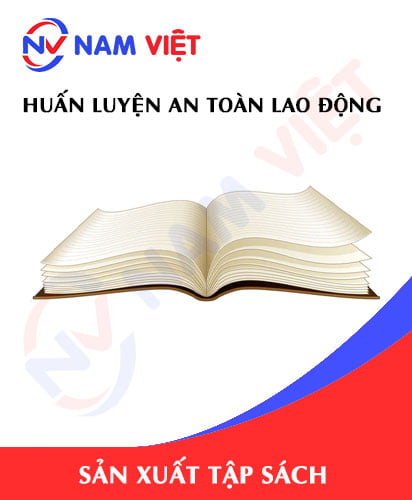
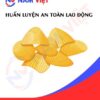
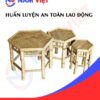



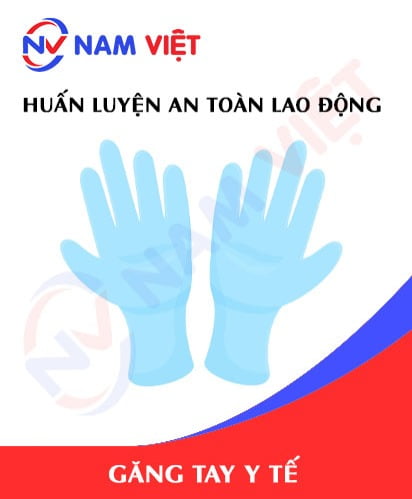


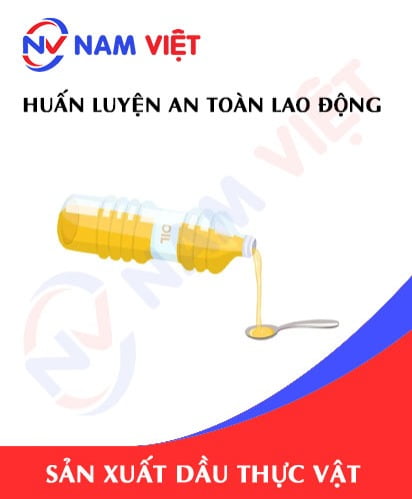




namchinh.haiphong341
Dịch vụ huấn luyện an toàn lao động rất tốt nhé, giảng viên dạy rất sinh động dễ hiểu!